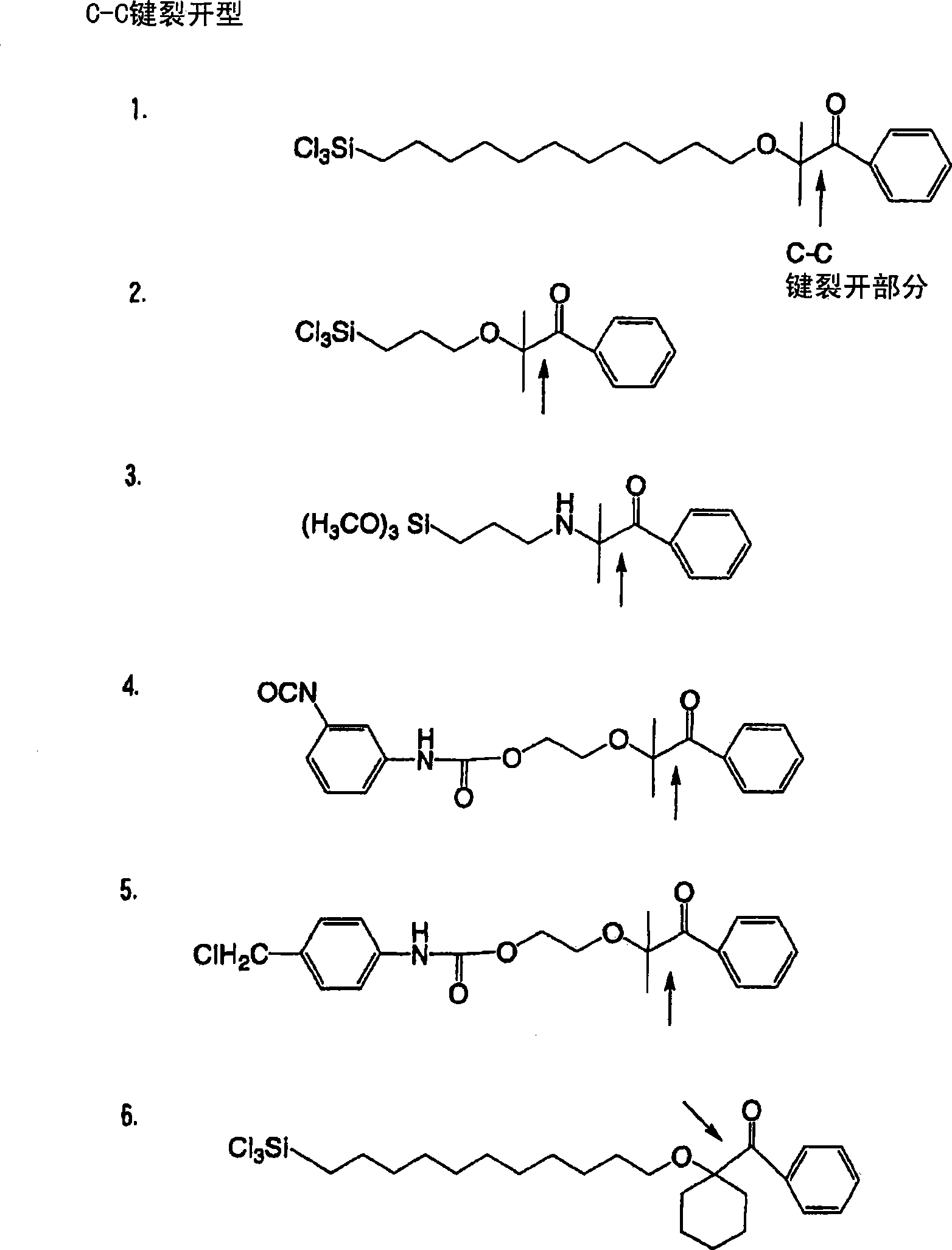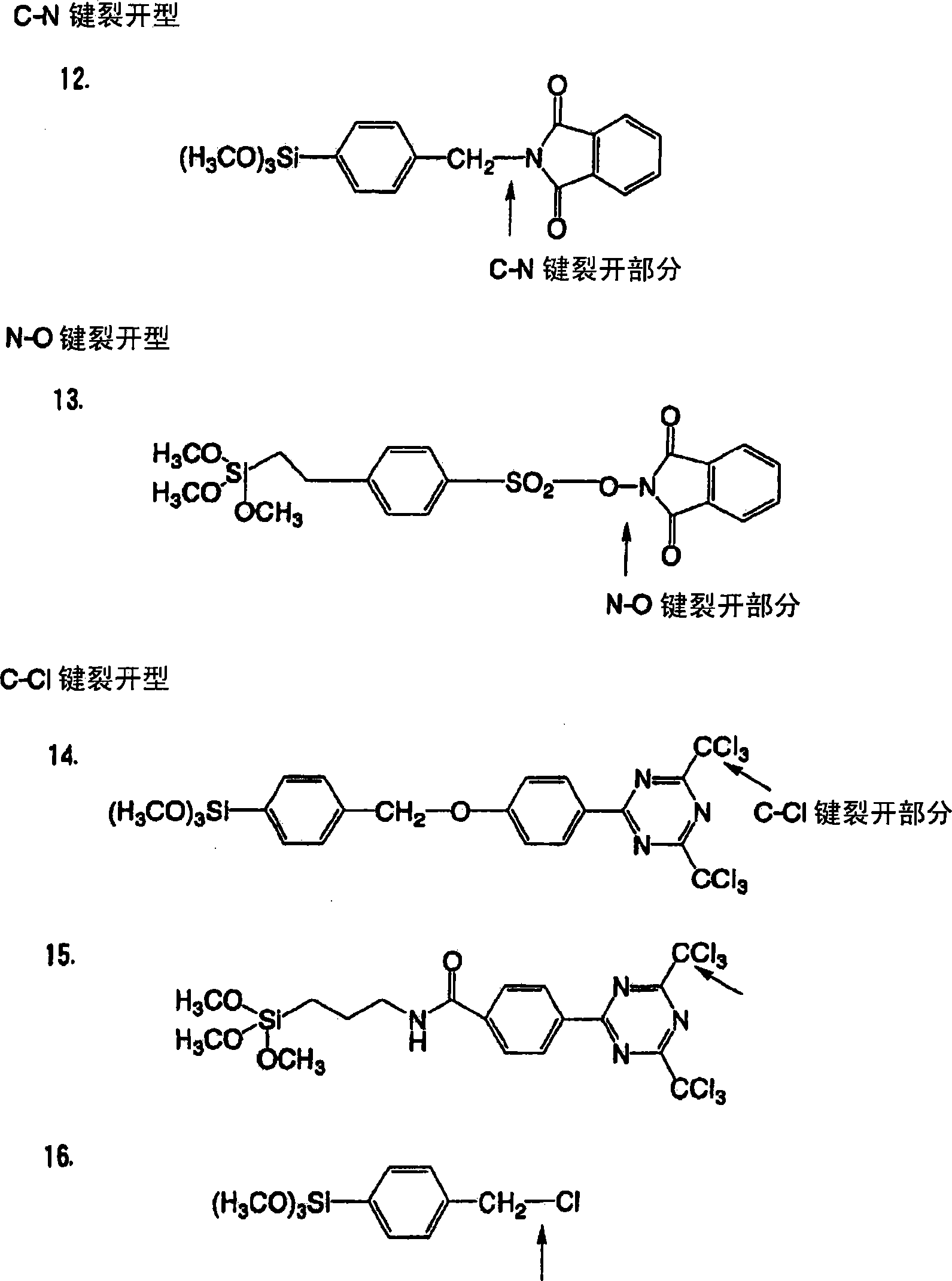Method for producing conductive pattern material
A manufacturing method and conductivity technology, which can be applied in conductive pattern formation, printed circuit manufacturing, cable/conductor manufacturing, etc., can solve the problems of graft polymer and metal peeling, etc., and achieve excellent retention of conductive materials and longevity Excellent performance and high resolution
- Summary
- Abstract
- Description
- Claims
- Application Information
AI Technical Summary
Problems solved by technology
Method used
Image
Examples
Embodiment 1
[0224] [(1) Graft polymer pattern forming process]
[0225] Using PET (188m, manufactured by Toray Co., Ltd.) as a substrate, the photopolymerizable composition described below was coated on the surface with a No. 18 coating bar, and dried at 80° C. for 2 minutes to form an intermediate layer with a thickness of 6 μm.
[0226]
[0227] ·Allyl methacrylate / methacrylic acid copolymer 2g
[0228] (The molar ratio of copolymerization is 80 / 20, and the average molecular weight is 100,000)
[0229] ·Ethylene oxide modified bisphenol A diacrylate 4g
[0230] ·1-Hydroxycyclohexyl phenyl ketone 1.6g
[0231] ·1-methoxy-2-propanol 16g
[0232] — Generate graft polymer —
[0233] Then, drop 5mL of 5wt% monomer aqueous solution of acrylic acid / glycidyl methacrylate (molar ratio 80 / 20) on the intermediate layer, cover it with a quartz plate, so that the monomer aqueous solution is evenly sandwiched in the intermediate layer and the quartz plate. A patterned light-shielding film (NC-1...
Embodiment 2
[0243] [(1) Graft polymer pattern forming process]
Synthetic example 1
[0244] (Synthesis Example 1: Synthesis of Compound A)
[0245] The synthesis of Compound 1 exemplified above was carried out by the following two steps. Give a schematic diagram of each step to explain.
[0246] 1. Step 1 (synthetic compound a)
[0247] Dissolve 24.5 g (0.12 mol) of 1-hydroxycyclohexyl phenyl ketone in a mixed solvent of 50 g DMAc and 50 g THF, and slowly add 7.2 g (0.18 mol) of NaH (60% oil suspension) in a water bath. Further, 44.2 g (0.18 mol) of 11-bromo-1-undecene (95%) was added dropwise thereto, and the reaction was carried out at room temperature. The reaction was terminated after 1 h. The reaction solution was poured into ice water and extracted with ethyl acetate to obtain a mixture containing Compound a as a yellow solution. 37 g of this mixture were dissolved in 370 mL of acetonitrile, and 7.4 g of water were added. Add 1.85g p-toluenesulfonic acid monohydrate and stir at room temperature for 20min. The organic phase was extracted with ethyl ...
PUM
| Property | Measurement | Unit |
|---|---|---|
| particle size | aaaaa | aaaaa |
Abstract
Description
Claims
Application Information
 Login to View More
Login to View More - R&D
- Intellectual Property
- Life Sciences
- Materials
- Tech Scout
- Unparalleled Data Quality
- Higher Quality Content
- 60% Fewer Hallucinations
Browse by: Latest US Patents, China's latest patents, Technical Efficacy Thesaurus, Application Domain, Technology Topic, Popular Technical Reports.
© 2025 PatSnap. All rights reserved.Legal|Privacy policy|Modern Slavery Act Transparency Statement|Sitemap|About US| Contact US: help@patsnap.com



